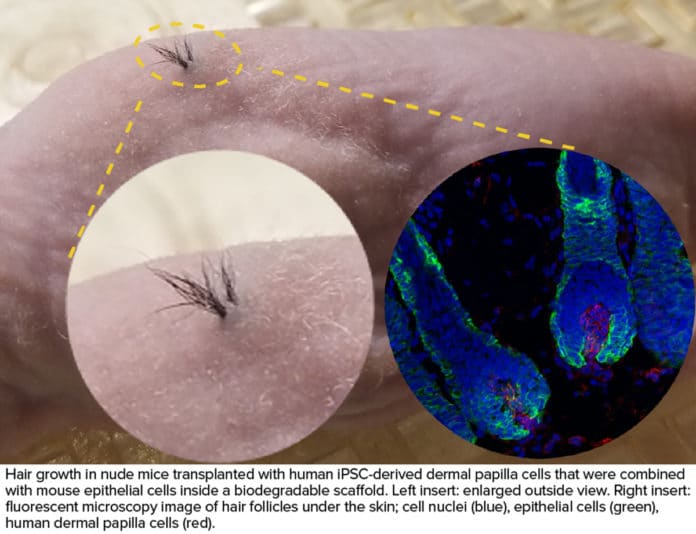Everybody loses hair. It is normal to lose around 50-100 hairs consistently. It makes clumps of hair fall out, which prompts hairless patches on the scalp or different zones of the body. Hair loss occurs in both male and female, regardless of their age.
There are numerous reasons for hair loss, such as unhealthy diets, aging and hormonal imbalance, and increasing chronic disease like arthritis, cancer, hypertension, and depression.
An estimated, over 80 million men, women, and children in the US experience hair loss. To combat hair loss, scientists from Sanford Burnham Prebys have created natural-looking hair that grows through the skin using human induced pluripotent stem cells (iPSCs). This is a major scientific breakthrough that helps transform the hair growth industry.
A newly formed company, Stemson Therapeutics, has licensed the technology.
Alexey Terskikh, Ph.D., an associate professor in Sanford Burnham Prebys’ Development, Aging and Regeneration Program and the co-founder and chief scientific officer of Stemson Therapeutics said, “Our new protocol described today overcomes key technological challenges that kept our discovery from real-world use. Now we have a robust, highly controlled method for generating natural-looking hair that grows through the skin using an unlimited source of human iPSC-derived dermal papilla cells. This is a critical breakthrough in the development of cell-based hair-loss therapies and the regenerative medicine field.”
Scientists primarily studied a type of cell dermal Papilla, that live inside the hair follicle. The cells control hair growth, including hair thickness, length, and growth cycle.
Lead researcher Antonella Pinto delivered the approach, Ph.D., a postdoctoral researcher in the Terskikh lab, features a 3D biodegradable scaffold made from the same material as dissolvable stitches. The scaffold controls the direction of hair growth and helps the stem cells integrate into the skin, a naturally tough barrier. The current protocol relies on mouse epithelial cells combined with human dermal papilla cells. The experiments were conducted in immunodeficient nude mice, which lack body hair.
The derivation of the epithelial part of a hair follicle from human iPSCs is currently in progress in the Terskikh lab. Combined human iPSC-determined epithelial and dermal papilla cells will enable the generation of entirely human hair follicles, prepared for allogeneic transplantation in people.
Distinct from any other approaches to hair follicle regeneration, human iPSCs provide an unlimited supply of cells and can be derived from a simple blood draw.
Richard Chaffoo, M.D., F.A.C.S., a triple board-certified plastic surgeon who founded La Jolla Hair MD and is a medical adviser to Stemson Therapeutics said, “Hair loss profoundly affects many people’s lives. A significant part of my practice involves both men and women who are seeking solutions to their hair loss.”
“I am eager to advance this groundbreaking technology, which could improve the lives of millions of people who struggle with hair loss.”
